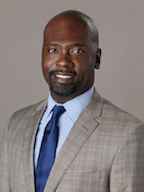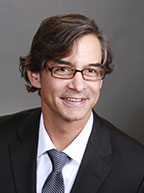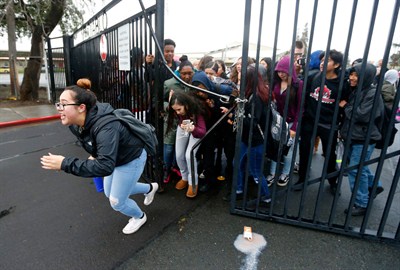Gun Violence and Health Equity - Another Perspective on the "March for Our Lives” Demonstrations


Delvecchio Finley, MPP, CEO of the Alameda Health System, visionary leader and agent of change in public health care, and Gregory P. Victorino, M.D., professor of surgery and director of Trauma Services at Highland Hospital, have written an insightful Op-Ed exposing one of the vastly under-appreciated consequences of easy access to guns, namely the lack of heath equity or "the ability to attain one's full health potential". This condition is manifest in low-income and impoverished communities disproportionately affected by gun violence. Fortunately, Alameda Health System has established a Traumatic Violence Intervention Program, similar to the San Francisco Wraparound Project at Zuckerberg SFG to stem the tide of recurring violence.
Note: This Op-Ed was originally published in The Mercury News on March 23, 2018. Please visit their site to view comments and social media links.
Op-Ed on Gun Violence and Health Equity
Limiting access to guns is paramount to giving low-income students the same chance at health as those in wealthier neighborhoods.
Across our country, young people and their families are staging coordinated “March for Our Lives” demonstrations following the murder of 17 at a Florida High School to demand policymakers do more to protect them and their schools by restricting access to guns, particularly assault-style weapons.
To many, the ease of access to guns is an issue of rights to own guns and public safety.
It is also an issue of health equity.

Health equity is achieved when every person can “attain his or her full health potential” and no one is “disadvantaged from achieving this potential because of social position or other socially determined circumstances,” such as homelessness, poverty, education and exposure to violence that lead to differences in length of life; quality of life; rates of disease, disability, and death; severity of disease; and access to treatment.
This is not always achieved among certain ethnic groups and communities.
While the death of 17 individuals draws intense reaction and scrutiny, according to the Centers for Disease Control and Prevention, more than 16 African American males, many living in disadvantaged communities, are killed by guns in the United States — every day.
It’s time to recognize that easy access to guns jeopardizes safety and health everywhere.
The U.S. Department of Housing and Urban Development (HUD) states that exposure to violent crimes damages the health and development of victims, family members, and entire communities— and that low-income people and racial and ethnic minorities are disproportionately affected.
In Alameda County, the same areas that have the most assault-related emergency department visits also have the highest rates of stroke, diabetes and heart disease. A study published in the American Journal of Public Health shows a strong relationship exists between perceived neighborhood safety and obesity rates because residents fearful of violence do not engage in healthy activities like walking or riding bikes.
The impact of this health inequity extends to the entire health care industry. A 2017 Health Affairs study estimated “that the annual financial burden associated with the emergency department and inpatient care for firearm-related injuries to be $2.8 billion in hospital charges. Considering the costs of rehabilitation, repeat admissions, and lost work, the CDC estimates that each year, approximately $46 billion are lost due to firearm-related injuries” — nearly the same amount spent on chronic obstructive pulmonary disease, the third leading cause of death in the United States.”
Surgeons in our Level 1 trauma department witness the pain and suffering of the indiscriminate use of firearms every day. They join their peers at the American Association for the Surgery of Trauma in calling for research, reporting and advocacy to find common ground to create a safer America. Our Traumatic Violence Intervention Program intervenes with victims of gunshot violence to prevent acts of retribution by taking advantage of critical “teachable moments” to point victims away from violence by connecting them to GED programs, relocation services and counseling for family members.
Unfortunately, these programs, like many efforts to combat chronic diseases and other health inequities, have limited impact without upstream interactions, such as stemming the flood of easily accessible guns into low-income communities.
Let’s hope that the collective voices from suburbs and low-income communities; from schools and churches calling for meaningful legislation resound so loudly that we finally eliminate this malignant cancer of senseless violence.